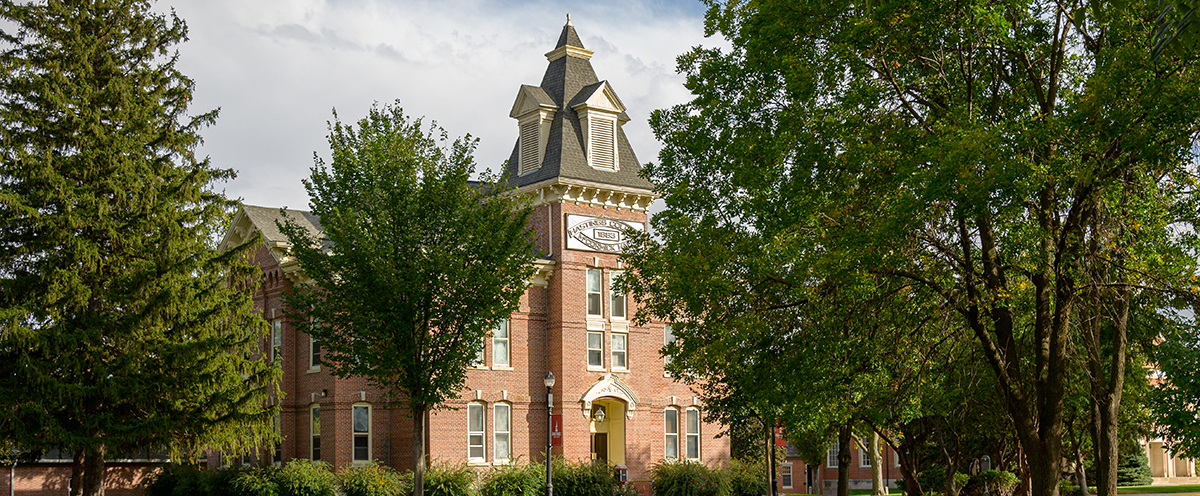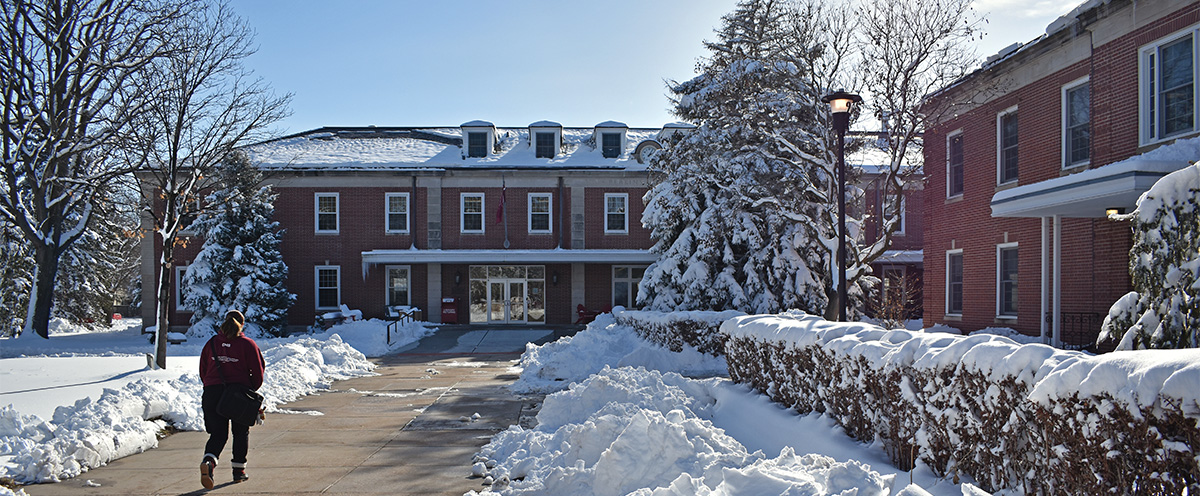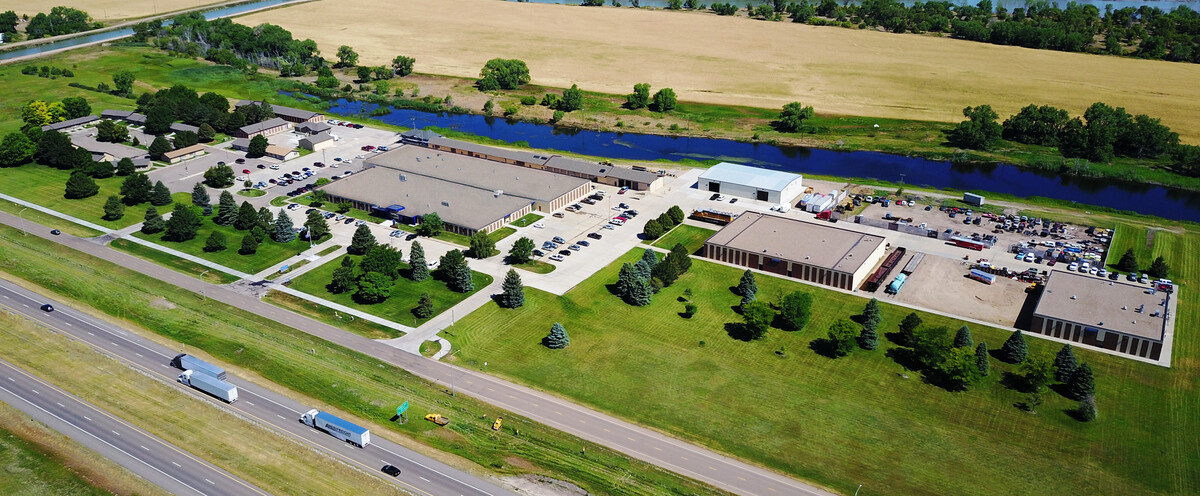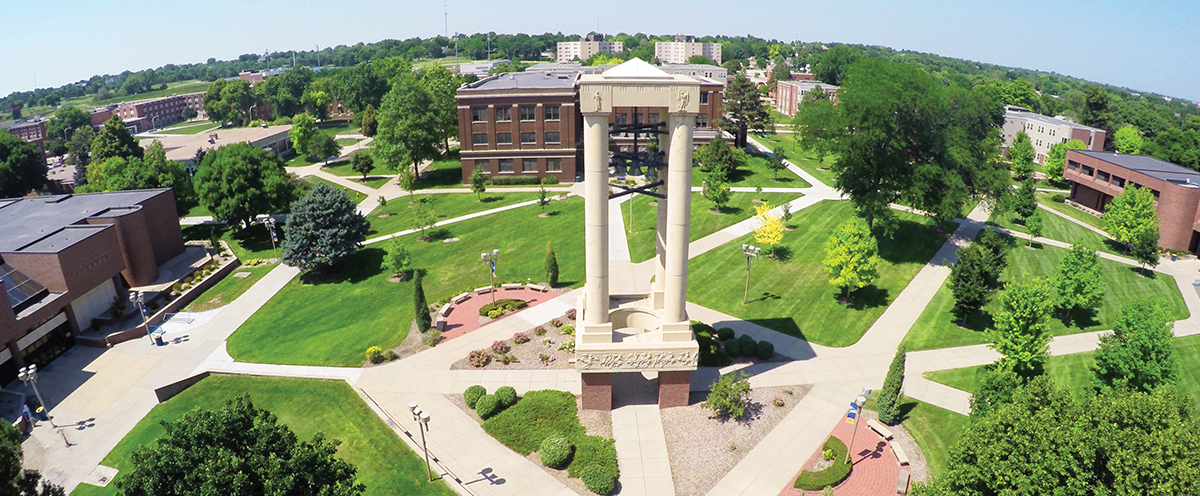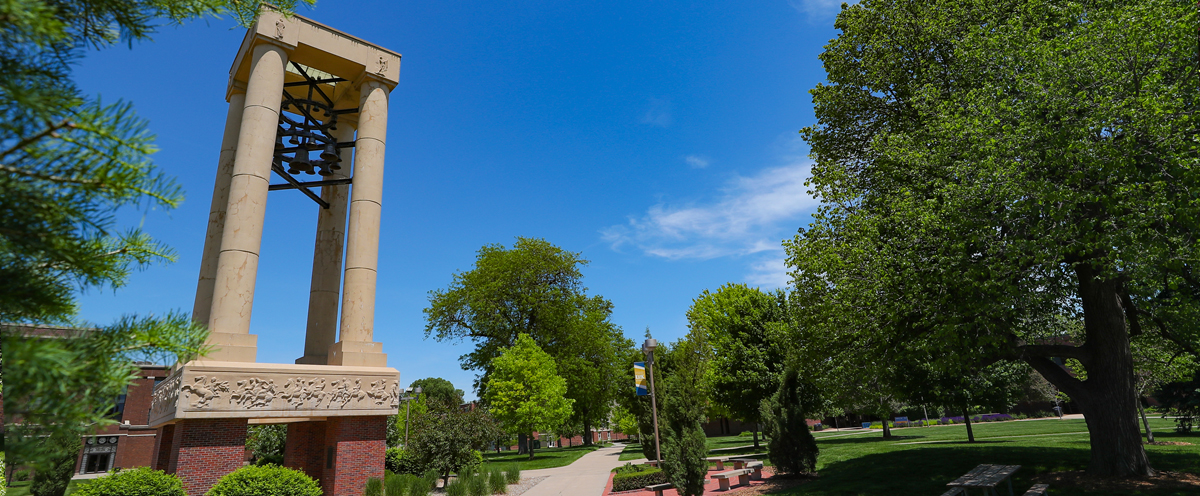NeASFAA Policy and Procedures
October 08, 2015
Policies
and
Procedures
Manual
Nebraska Association of
Student Financial Aid
Administrators
INTRODUCTION TO THE NeASFAA POLICIES AND PROCEDURES MANUAL.. 5
1. NeASFAA MISSION & PURPOSE.. 6
1.1 NeASFAA Mission Statement 6
2. BOARD OF DIRECTORS [Article V]. 7
2.6 Retention of On-Line Voting Records. 8
2.7 Primary Responsibilities of the NeASFAA Board of Directors. 8
2.8 Detailed Officer Descriptions. 10
2.8.1 PRESIDENT [Article VI, Section 7]. 10
2.8.2 PRESIDENT‑ELECT [Article VI, Section 8]. 12
2.8.3 PAST‑PRESIDENT [Article VI, Section 11]. 13
2.8.4 SECRETARY [Article VI, Section 9]. 13
2.8.5 TREASURER [Article VI, Section 3 and 10. 14
2.8.6 SECTOR REPRESENTATIVES [Article V, Section 3]. 15
3. COMMITTEES [Article VII, section 1 - 7]. 16
3.1 Committee Chairpersons. 16
3.2 Committee Membership Policy. 17
3.4 Committee Meeting Expenses. 18
3.5 Detailed Committee Descriptions. 18
3.5.1 ASSOCIATION GOVERNANCE COMMITTEE.. 18
3.5.2 MEMBERSHIP AND COMMUNICATIONS COMMITTEE.. 19
3.5.3 CORPORATE DEVELOPMENT COMMITTEE.. 21
3.5.4 FINANCE AND AUDIT COMMITTEE.. 22
3.5.5 NOMINATIONS & ELECTION COMMITTEE [Article VII, Section 6]. 23
3.5.6 PROFESSIONAL DEVELOPMENT AND RECOGNITION COMMITTEE.. 24
4. GENERAL ASSOCIATION POLICIES AND PROCEDURES. 25
4.4 Conference Sponsors and Exhibitors. 26
5. FINANCIAL POLICIES AND PROCEDURES. 27
5.1 Accounts Receivable Policy. 27
5.3 Registration Fee Refund Policy for Conferences and Workshops. 28
5.5 Waiver of Conference Registration Fee. 28
5.6 Reimbursements, Honoraria, and Travel Expense. 28
5.7 Contract Signing Policy. 29
5.11Revenue and Expenditures Policy. 30
5.12 Sales Tax Reimbursement Policy. 31
5.14 Other Expense Considerations: 32
5.15 Expressions of Condolences. 32
PARLIAMENTARY PROCEDURES: Motions. Debates and Votes. 34
PARLIAMENTARY PROCEDURES: Table of Precedence of Parliamentary Motions. 37
HISTORY OF NeASFAA
The Nebraska Association of Student Financial Aid Administrators had its beginning at Kearney State College in the Spring of 1967. Dr. Jean Harvey, Financial Aid Administrator at Creighton University, foresaw the need to have an organized professional association of financial aid officers in the state, and personally contacted all of the higher education schools which were administering financial aid programs. Dr. Harvey invited them to an organizational discussion meeting in Kearney. This meeting was hosted by Donald Tewell who was, at the time, Director of Financial Aid at Kearney State.
At this meeting, it was decided that an organization was needed to accomplish the following:
- develop professionalism among aid officers of Nebraska;
- provide a means to bring together aid officers for the discussion of common problems;
- influence federal and state legislation dealing with student financial aid programs and to provide an avenue for dissemination of ideas and concerns of students and administrators in financial aid problems;
- provide training for newly appointed aid officers;
- assist secondary school counselors in their work with students in planning their future by providing timely and updated information concerning financial aid;
- provide a means of affiliation with the Midwest Regional Student Financial Aid Organization.
With these goals and objectives in mind, an organizational and constitutional committee was selected, with G. Heinicke of Concordia College as Chairperson. The first organizational association meeting was held in September of 1967. The association requested and received acceptance for affiliation with the Midwest Regional Association of Student Financial Aid Administrators.
At the Spring Meeting in 1978, the Association voted to sever affiliation with the Midwest Region and join the Rocky Mountain Association of Student Financial Aid Administrators.
INTRODUCTION TO THE NeASFAA POLICIES AND PROCEDURES MANUAL
Purpose
The Nebraska Association of Student Financial Aid Administrators (NeASFAA) Policies and Procedures Manual (PPM) has been designed to provide guidance, reference material, and historical continuity for the NeASFAA Board of Directors and Committee Chairpersons. Each member of the Board of Directors and the Committee Chairperson is responsible for knowing the content of this manual, and providing pertinent corrections and changes. This document should be stored in a binder and passed on to future persons in similar leadership roles.
The manual is reviewed annually for any necessary revisions. The document is stored electronically, maintained by the Secretary, for ease in updating and for transfer purposes as changes take place in the Board of Directors and Committee Chairpersons.
Content
The NeASFAA PPM supplements the Articles of Incorporation and By‑Laws by: (1) providing an overview of the Association's structure; (2) describing the responsibilities of members in leadership positions; (3) presenting the Association's approved operating policies and procedures.
Use
It is the responsibility of each Board member and Committee Chairperson to: (1) bring their manual to all Board/committee meetings; (2) keep the manual current by adding and removing material (e.g. Board of Directors membership list, new organizational operating policies or forms); and (3) pass the manual on to the succeeding member as soon as feasible at or after the annual meeting in April.
Definitions
References to time frames within this manual will be in calendar days unless they are specifically noted otherwise. The Association’s fiscal year begins July 1 and ends June 30.
Citations
All citations used in this manual refer to the Association Bylaws unless noted otherwise.
1. NeASFAA MISSION & PURPOSE
1.1 NeASFAA Mission Statement
The Nebraska Association of Student Financial Aid Administrators (NeASFAA) exists primarily to promote the professional preparation, effectiveness and mutual support of persons involved in student financial aid administration. In addition, NeASFAA exists to bring about the implementation of programs that will have a positive impact on students’ ability to pay for programs of higher education.
In order to effectively serve the needs of its members, NeASFAA shall strive to encourage its members to serve in a leadership role within the Rocky Mountain Association of Student Financial Aid Administrators (RMASFAA) and the National Association of Student Financial Aid Administrators (NASFAA).
The Association shall serve as a forum for its members and act as a focus for the expression of views on matters relating to the development, funding and administration of student financial aid.
While the Association’s primary goal is to provide an avenue for preparation to those members who are directly responsible for the administration of student aid programs, NeASFAA shall strive to expand its training services to include other individuals who play a major role in assisting students in completing and paying for programs of higher education.
In order to effectively meet the goals of its mission and the diverse and changing needs of the post-secondary education community, NeASFAA seeks to maintain a spirit of cooperation and an approach which is flexible, equitable and innovative.
1.2 NeASFAA Purpose
NeASFAA exists to:
- develop professionalism among aid officers of Nebraska;
- provide a means to bring together aid officers for the discussion of common problems;
- influence federal and state legislation dealing with student financial aid programs and to provide an avenue for dissemination of ideas and concerns of students and administrators in financial aid problems;
- provide training for aid officers;
- assist secondary school counselors in their work with students in planning their future by providing timely and updated information concerning financial aid;
- provide a means of affiliation with the Rocky Mountain Association of Student Financial Aid Administrators (RMASFAA) and the National Association of Student Financial Aid Administrators (NASFAA).
2. BOARD OF DIRECTORS [Article V]
2.1 Composition
As defined in the by-laws, the Board of Directors is composed of the elected officers of the Association: the President, President‑Elect, Past‑President, Treasurer, and Secretary. The balance of the Board is comprised of one sector representative from each of the five sectors. The five sectors are: 1) private vocational schools; 2) two year public institutions; 3) private colleges and universities; 4) four year public colleges and universities; and 5) associate membership.
The general membership elects its governing officers to a specific office. Doing so eliminates historical conflict, prepares the newly elected Directors for their specific task, enhances planning and reduces confusion of the membership over its role in the election process. Members wishing election to the Board of Directors shall be listed as running for a specific officer position. The Nominations and Election Committee shall operate under this premise.
At the first meeting of the newly elected Board of Directors, the Directors shall officially ratify the election results of the new Directors. This shall be the first item of business on the agenda. While the Articles and Bylaws provide only for the Directors to elect the officers, it is incumbent on the Directors to follow the wishes of the membership.
2.2 Meetings
The Board of Directors will meet at least four times per year. The times of these meetings will be the decision of the President but should be at a time which is most convenient for members. One of these meetings will be held in conjunction with the Spring Conference of the Association. Notification of meetings shall be given to all members in accordance with the Bylaws of the Association [Article 5, Section 10].
The Board of Directors may choose to conduct meetings through electronic means.
Committee Chairpersons and/or Vice Chairpersons shall be invited to meetings as determined by the President.
A summary of Parliamentary Procedures is found in Appendix 1 and 2 of this manual.
Board members shall not be reimbursed by the Association for travel or lodging expenses incurred while in attendance at Board meetings.
Meals may be provided to Board members during meetings, subject to the approval of the President.
2.3 Meeting Agendas
Meeting agendas will be prepared and distributed within fourteen days of each meeting. This activity shall be performed by the President or designee in accordance with Article IV, section 13.
Regular reports are to be made by standing Committee Chairpersons (or their representatives) and Sector Representatives. Reports by ad hoc committees will be made at the discretion of the President. Committee and sector reports will be distributed at the meeting of the Board.
2.4 Location of Meetings
Location of Board of Directors' meetings will be determined by the President.
2.5 Meeting Minutes
Minutes will be distributed by the Secretary to the Board members for final approval at the next regularly scheduled board meeting in accordance with Article V, Section 16 of the Bylaws of the Association.
2.6 Retention of On-Line Voting Records
The Secretary shall keep all emails with motions, seconds, discussions, and votes until the end of the following fiscal year. It is allowable to keep these records in electronic form provided they can be reproduced as necessary.
2.7 Primary Responsibilities of the NeASFAA Board of Directors
Review and Adhere to the Mission of NeASFAA
The Board's fundamental responsibility is to lead the association in the advancement of the NeASFAA Mission and Purpose through active participation and professional objectivity. The Board is charged with the responsibility of ensuring that the activities of the association remain true to its mission and purpose.
Support and Advise the Association Officers
The Board shall continually review the actions and plans of the elected officers and other Board members to ensure the organizations goals and objectives are being met.
Ensure Effective Planning
Board members must be involved extensively in the planning process and help to implement the objectives, including acquisition of new resources, if needed. The Board should formally and enthusiastically approve the plan following an extended opportunity for consultation and revision.
Ensure Adequate Resources
The Board should periodically review the association’s revenue raising rationale, assets, expenses and expected expenditures to ensure that adequate resources are available.
Manage Resources Wisely
An important part of serving the public trust is protecting accumulated assets and ensuring current income is managed properly. As NeASFAA is incorporated and tax‑exempt under federal law, the Board's obligation goes well beyond its members. This is most commonly done by helping to develop and approve an annual budget. All historical and current information pertinent to such discussions should be available upon advance request from the Treasurer or Finance and Audit Committee Chair.
Determine and Monitor Programs and Services
What the organization does for its members greatly determines the significance of the organization. The Board's fundamental role is to determine if the current or proposed programs and services are consistent with NeASFAA's stated mission and purpose. The Board must carefully consider the competing priorities and concerns of the Association. Although officers and committees have a certain degree of autonomy, financial and programmatic decisions should not be made independently, unless it is unavoidable.
Enhance the Organization's Public Image
Achievements and contributions of the membership should be well publicized. Timely written reports from the officers and committees and explanations of Board actions are essential to promoting group understanding and commitment. Likewise, no Board member should represent him/herself as speaking for the Board unless specifically authorized to do so.
Serve as an Appeals Panel
The Board, or certain members of the Board, will serve as a final appeals panel.
Assess its Own Performance
It is good practice for the Board to periodically review its performance in the following areas: membership composition, the member identification process, organizational structure and overall performance in meeting the responsibility to carry out the mission and purpose of the association.
Ensure Vacant Board Positions are Filled
- President: If the President dies, resigns, or otherwise permanently vacates the presidency prior to the end of the regular term, the President-Elect shall perform the duties of the President for the balance of the term as well as the normal scheduled term for succession. The President-Elect shall also perform the duties of the President in the temporary absence of the President.
- Immediate Past-President: If the Immediate Past-President dies, resigns, or otherwise permanently vacates the office of Past-President prior to the end of the regular term, the next most recent available Past-President shall perform the duties of the Immediate Past-President for the balance of the term.
- Sector Representative: A vacancy in the office of Sector Representative shall be filled by an eligible person from an institution holding an eligible membership in NeASFAA, to be recommended by the sector the office will represent. The Board of Directors will ratify the selection.
- President-Elect, Secretary, and Treasurer: A vacancy in any office other than that of President, Immediate Past-President, or Sector Representative shall be filled by an eligible person from an institution holding an eligible membership in the Association, to be appointed by a majority vote of the Board of Directors from nominations presented by the President. Such appointment shall be on an interim basis until the next general election of officers, and shall not prejudice the election of the incumbent to a regular term.
2.8 Detailed Officer Descriptions
2.8.1 PRESIDENT [Article VI, Section 7]
The President acts as the chief executive officer of the Association, presiding at all meetings of the Association and chairing all meetings of the Board of Directors.
Responsibilities
Provides leadership and direction to all activities of the Association, the Board of Directors, and all committees of the Association.
Delivers notices and agendas for any regular or special meeting of the members and/or Board of Directors which specifies the place, date, and hour of the meeting. This notice must be sent in accordance with Article IV, section 13.
Upon installation, the President shall provide the association with goals and objectives for his/her term of office.
Provides guidance to committee planning, including the establishment of committee goals and objectives.
Monitors compliance with and achievement of presidential goals and objectives.
Calls and presides at all meetings of the Association and the Board.
Maintains a list of Board members, their addresses, telephone numbers, FAX numbers and e-mail addresses.
Serves as the official representative of the Association and the Board, or delegates such responsibility to another board member as necessary.
Shall appoint a member to serve as the Association Historian (see Section 6.1).
Serves as an ex‑officio member of all Association committees.
Serves as the state delegate and voting representative from NeASFAA at the Rocky Mountain Association of Student Financial Aid Administrators (RMASFAA) Board of Directors meetings. If the President is unable to attend the RMASFAA Board of Directors meetings, he/she should appoint a state delegate from the Board of Directors to serve in this capacity.
Affirms and approves all Committee Chairpersons. The President approves committee membership as recommended by the Committee Chairperson.
Executes all contracts for the association.
Submits an annual report to the Association on all matters which may be of interest or concern to the Association members which have taken place during that term of office.
Provides written article(s) to the RMASFAA Association News Committee upon request.
Length of Office
The President shall automatically take office for a period of one year commencing with the installation of officers at the conclusion of the Business Meeting of the Spring Conference.
2.8.2 PRESIDENT‑ELECT [Article VI, Section 8]
The President‑Elect shall perform the duties of the President in the event of the absence or incapacity of the President to serve and shall perform such duties as are assigned by the President or prescribed by the Board of Directors.
Responsibilities
Provides assistance to the President in any areas as requested.
Serves as the Committee Chairperson of the Nominations and Elections Committee.
Serves as the Board liaison to the Professional Development and Recognition Committee.
Serves as the Association’s Parlimentarian at all Board meetings, the Business Meeting at the spring conference, and as a resource to Committee Chairpersons.
Finalizes goals and objectives as stated in candidacy for President-Elect.
In preparation for assuming the Presidency, should prepare the following items by April:
- Set attainable goals/priorities for the year.
- Establish specific committee goals consistent with goals/priorities.
- Select committee Vice Chairs and committees.
Responsible for creating committee interest forms to identify potential committee members for the next membership year.
Represents NeASFAA at the NASFAA Leadership Conference Workshop if directed by the Board of Directors.
Arranges for President's plaque presentation at the Spring Conference.
Length of Office
A period of one year, following the Business Meeting of the Spring Conference. The President‑Elect automatically becomes President one year later.
2.8.3 PAST‑PRESIDENT [Article VI, Section 11]
Past‑President shall perform such duties as assigned by the President or prescribed by the Board.
Responsibilities
Serves as the Committee Chairperson of the Association Governance Committee.
Represents NeASFAA as the State delegate at the fall RMASFAA Board of Directors meeting.
Serve as Chair of the Board of Directors and preside at the annual meeting in the absence of the President and the President-Elect.
Length of Office
A period of one year, following the Business Meeting of the NeASFAA Spring Conference.
2.8.4 SECRETARY [Article VI, Section 9]
The Secretary is responsible for recording, distributing, and maintaining the records of the Association and the Board of Directors as described in Section 4 of this manual. Performs other duties as assigned by the President or prescribed by the Board of Directors.
Responsibilities
Prepares and distributes Board meeting minutes to the Board of Directors, Committee Chairpersons, and other designated Association members within a four week time period of any meeting of the Board or Association.
Serves as Board Liaison to Communications Committee.
Maintains the most current electronic version of the Association Policy & Procedures Manual and Bylaws.
Shall keep all emails with motions, seconds, discussions, and votes until the end of the following fiscal year. It is allowable to keep these records in electronic form provided they can be reproduced as necessary.
Serves as the official correspondent for the Association. Responsible for sending sympathy cards to members in accordance with Section 5.15. Responsible for sending cards to members leaving the Association.
Retains the Association’s corporate seal and makes available for Association business needs when appropriate.
Maintains the electronic version of the Association’s letterhead and logo and coordinates its use.
Collects Association paperwork as outlined in Section 6.1 and forwards all required documents to the Historian for storage.
Length of Office
A period of one year, following the Business Meeting of the NeASFAA Spring Conference.
2.8.5 TREASURER [Article VI, Section 3 and 10
The Treasurer is an officer of the association and shall be responsible for maintaining all financial records of the Association and performing transactions as directed by the Board.
Responsibilities
Receives and disburses monies of the Association in accordance with the directives established by the Board of Directors.
Maintains general ledger records and supporting documentation of all transactions.
Reconciles all Association monetary accounts on a monthly basis.
Cooperates with the Association’s Finance and Audit Committee Chair in completing the annual audit. The audit shall be performed within a reasonable timeframe after fiscal year end.
Maintains the Association’s liability insurance policy on an annual basis.
Coordinates preparation and filing of all necessary Association tax returns by November 15 of each year.
Prepares and presents financial statements for the Board of Directors.
Submits Nonprofit Corporation Biennial Reports which are due in odd numbered years. Treasurer is listed as Registered Agent Domestic Change of Registered Agent and/or Office form must be completed at time new Treasurer is installed.
Recommends and consults with the Board of Directors to develop and maintain proper reserve levels and investment of funds.
Serves as an ex-officio member of the Finance and Audit Committee.
Prepares to pay Association expenses at all appropriate association activities.
Maintains inventory list of equipment purchased by NeASFAA.
Performs other financial duties as outlined in section 5.
Performs other duties as assigned by the President or prescribed by the Board of Directors.
Length of Office
A period of two years, following the annual audit of the association.
2.8.6 SECTOR REPRESENTATIVES [Article V, Section 3]
NeASFAA is comprised of five sectors: 1) Private vocational schools; 2) Two year public institutions; 3) Private colleges and universities; 4) Four year public colleges and universities; and 5) Associate membership. Each sector must elect a Sector Representative. Each Sector Representative shall serve as a Board member representing the interests of their respective sectors and serving as the communication link from the Board to sector members.
Responsibilities
Serves as the initial contact for new sector members.
Advocates NeASFAA membership.
Serves on the Nominations & Election Committee.
Communicates sector information, plans and activities.
Serves as facilitator for sector meetings.
Prepares and shares sector activities reports for the Board of Directors.
The Associate Sector Representative serves as the secondary coordinator of the annual philanthropy project while working with the Chair of the Corporate Development Committee. It is the responsibility of the Associate Sector Delegate to recommend 2-3 non-profit organizations located in the area of the spring conference to the Board of Directors at the winter meeting for approval. It is the responsibility of the Corporate Development Committee Chair to solicit monetary donations and supplies from members and arrange the presentation at the Spring conference.
Performs other duties as assigned by the President or prescribed by the Board of Directors.
Length of Office
A period of two years, following the Business Meeting of the NeASFAA Spring Conference. Sector Representatives shall serve staggered terms, with the private vocational, private colleges and universities, and associate representatives voted on in odd numbered years, and 2-year public and 4-year public representatives voted on in even years.
3. COMMITTEES [Article VII, section 1 - 7]
Standing Committees
NeASFAA utilizes the following committees. NeASFAA committees should make every attempt to coordinate their activities with state and national committees with similar responsibilities while representing the multicultural diversity of our membership, institutions and students.
- Association Governance Committee
- Corporate Development Committee
- Finance and Audit Committee
- Membership and Communications Committee
- Nominations & Election Committee
- Professional Development and Recognition Committee
Ad Hoc Committees
Ad hoc committees may be appointed to carry out specific and necessary functions of the Association. The President is responsible, subject to Board approval, for the creation of such a committee which shall address the specific purpose, the scope, authorized time limit and membership composition.
3.1 Committee Chairpersons
Responsibilities
Committee Chairpersons shall develop formal goals and objectives, plans of action, and priorities for the coming year. The Vice Chairpersons shall be involved in the planning processes for the smooth development of the committee. Since the Board is the final authority for the actions of the committee, it is important that they review the goals, objectives, and priorities of each committee. Individual committee plans should support the mission of the Association.
Committee Chairpersons are responsible for notifying members of their committee appointments, arranging all committee meetings, and distributing the meeting agendas. They should submit committee calendars and general membership activities in a timely manner to the Communications Committee representative for inclusion in the general Association calendar.
Committee Chairpersons are responsible for submitting the committee's annual budget to the Finance and Audit Committee and being accountable for the budget approved by the Board of Directors. Committee Chairpersons shall monitor all expenses to ensure that they are legitimate expenses of the committee.
Itemized expenses should be submitted by the Committee Chairperson to the Treasurer via the NeASFAA Expense/Reimbursement Claim Form.
Committee Chairpersons should ensure that minutes are taken at each committee meeting. All committee records are passed on annually to the incoming Chairperson.
Each Committee Chairperson or the Committee Chairperson’s designee is responsible for submitting news articles to the Communications committee for possible inclusion in the NeASFAA Newsletter.
Committee Chairpersons and Vice Chairpersons will attend Board of Directors meetings if requested by the President. Committee Chairpersons should submit a written report at the Board of Directors meetings.
Committee Chairpersons will be responsible for completing a final year‑end report. This written report is shared with the NeASFAA Board of Directors and presented during the business meeting at the spring conference. It will include a list of accomplishments as well as suggestions and recommendations for future committees.
Committee Chairpersons may have other duties as assigned by the President or prescribed by the Board of Directors.
3.2 Committee Membership Policy
Committee members must be NeASFAA members in good standing as defined in the Bylaws.
All committees should have "two-deep" leadership with a Chairperson and a vice chair. The Vice Chairperson succeeds the Committee Chairperson for the second year on the committee at the Annual Business Meeting, except for the Professional Development and Recognition Vice Chairperson who will succeed the Professional Development and Recognition Chairperson following the conclusion of the spring conference. This shall assist in developing continuity on all committees.
After the new President-Elect is determined the following people will meet to select the new vice chairs: current President-Elect, current Vice Chairpersons and newly elected President-Elect.
The President-Elect will select replacements for any vacated Committee Chairperson and the Chairperson will fill any vacated Vice Chairperson positions with assistance and guidance from the Board of Directors.
After the spring conference the President and Chairpersons shall determine committee member appointments utilizing the committee interest form.
It is recommended that as many members as possible be invited to participate with consideration given to sector, institution and associate membership. Committee Chairpersons should coordinate their selections to minimize appointment of members to multiple committees.
These policies are established to best serve NeASFAA and its committee structure. The President, with Board approval, may make exceptions to these policies when such exceptions are in the best interest of NeASFAA.
3.3 Term of Appointment
The term of office for Committee Chairpersons and members is one year. The Vice Chairperson serves one year and then becomes the Committee Chairperson the following year.
3.4 Committee Meeting Expenses
Travel expenses incurred by committee members in attending committee meetings are not reimbursable expenses.
3.5 Detailed Committee Descriptions
Detailed committee descriptions are outlined in this manual.
3.5.1 ASSOCIATION GOVERNANCE COMMITTEE
Purpose
The purpose of the Association Governance Committee is to review and recommend to the Board of Directors changes to the Association Bylaws and Policies and Procedures Manual to ensure the Association’s written statements are consistent with the manner in which it conducts business.
Duties
Once changes to the Bylaws are identified, the committee shall draft language for the proposed changes and provide the membership at large with a summary/rationale of the changes. No vote shall be taken until at least thirty (30) days after copies of the proposed changes have been provided to the membership. Approval of the proposed change(s) requires a majority/quorum of the voting representatives.
Once changes to the Policy and Procedures Manual are identified, the committee shall draft language for the proposed changes and provide the Board of Directors with a summary/rationale of the changes. The Board may recommend revisions as appropriate. Approval of the proposed change(s) requires a majority/quorum of the Board of Directors.
Recommended Committee Composition
Committee members should be selected in accordance with the Committee Membership Policy (see Section 3.2). The immediate Past-President serves as Committee Chairperson. The President-Elect serves as ex-officio. Other members may be recommended by the Committee Chairperson.
3.5.2 MEMBERSHIP AND COMMUNICATIONS COMMITTEE
Purpose
The purpose of this committee is to facilitate communication and continued development and maintenance of the Association.
Duties
Maintains editorial control over any publications or communication mediums of the Association.
Develops Communication Policies and Procedures to regulate submissions to publications and communication mediums.
Develops and presents an annual committee calendar to the Board of Directors to be posted on the NeASFAA website.
Develops an association Master Calendar inclusive of RMASFAA, NASFAA and Department of Education events to be posted on the NeASFAA website.
Collects and disseminates information and opinions concerning both state and federal legislation and regulations to the individual members of the Association.
Analyzes possible options open to the Association membership in the area of Federal Legislation and regulations and encourages membership to respond.
Prepares and distributes to the membership time‑sensitive information and other news affecting the association.
Disseminates NeASFAA membership information to state, regional and national associations, as appropriate.
Solicits articles and informational items of importance for inclusion in an appropriate format. News and reports may include the following:
- Highlights of the Board of Directors' meeting
- Message from the President
- Treasurer's report
- Committee reports
- Sector news
- Opinion papers
- Calendar of events and activities
- Other news items
This committee is responsible for distributing the committee interest forms as received from the President-Elect.
The committee shall perform other duties as assigned by the President or prescribed by the Board of Directors.
Manages the membership records of the Association.
Collects and compiles information about NeASFAA membership and provides that information for dissemination to state, regional and nationaL associations.
Maintains updated membership list.
Develops appropriate communication materials for membership mailings and ensures that membership dues are paid.
Identifies and cultivates potential new members on an on-going basis.
Submits the names of potential new members to the Board of Directors for approval.
Develops promotional materials advocating NeASFAA membership.
Maintains the Membership Directory.
Verifies that all members on the Membership Roster have paid the annual dues and provides a copy of the verified Membership Roster to the Treasurer.
Recommended Committee Composition
Committee members should be selected in accordance with the Committee Membership Policy (see Section 3.2). Members should have a working knowledge of publishing, layout and/or technology development of various types of communication mediums.
3.5.3 CORPORATE DEVELOPMENT COMMITTEE
Purpose
The Corporate Development Committee is responsible for soliciting funds to support the purposes of the Association, except for the collection of membership dues.
Duties
Solicit sponsorship funds from organizations supporting the mission of NeASFAA.
Solicit vendors for the annual conference.
Coordinate the billing and collection of sponsorship funds with assistance from the Treasurer.
Request donations of giveaways from members for the annual Support Staff Workshop.
Serves as the primary coordinator of the annual philanthropy project while working with the Associate Sector Delegate. It is the responsibility of the Associate Sector Delegate to recommend 2-3 non-profit organizations located in the area of the spring conference to the Board of Directors at the winter meeting for approval. It is the responsibility of the Corporate Development Committee Chair to solicit monetary donations and supplies from members and arrange the presentation at the Spring conference.
Provide a list of sponsors and vendors to the Professional Development and Recognition Committee Chair at least one month prior to any meetings of the membership for appropriate recognition.
Recommended Committee Composition
Committee members should be selected in accordance with the Committee Membership Policy (see Section 3.2).
3.5.4 FINANCE AND AUDIT COMMITTEE
Purpose
This committee is responsible for reviewing the general financial position of the Association and advising the Board relative to fiscal matters.
Duties
Develops and presents the annual budget to the Board of Directors for approval.
Presents and justifies the annual budget to the Association membership at the spring conference business meeting.
Reviews budget requests from the officers and Committee Chairpersons.
Establishes and enforces the Financial Policies and Procedures of the Association (see section 5 of this manual).
Researches and makes recommendations to the Board of Directors regarding reserve levels, investment opportunities, and other financial matters as assigned by the Board of Directors.
Conducts the annual audit.
Submits annual audit report to the President within 30 days after the audit is completed and to the Board of Directors at the Board meeting immediately following the audit.
Reviews and updates the Strategic Fiscal Plan (as described in Section 5.9).
Maintains and updates the audit guide (as found in Appendix 3).
The committee shall perform other duties as assigned by the President or prescribed by the Board of Directors.
Recommended Committee Composition
This committee shall be comprised of independent Association members selected in accordance with the Committee Membership Policy (see Section 3.2). The Treasurer and President-Elect shall serve as ex-officio members of the committee.
3.5.5 NOMINATIONS & ELECTION COMMITTEE [Article VII, Section 6]
Purpose
This committee is charged with conducting the nominations and general election processes for NeASFAA offices in accordance with the following timeline.
Duties
(April – September) Solicits nominations for open positions and obtains resumes of nominees.
(September - October) Committee meets to develop and approve the final slate of candidates for NeASFAA offices.
(November) Conducts the NeASFAA election process by 1) sending the ballot to the voting member of each institution via e-mail/ paper and 2) announcing the slate to the association membership via the listserv and the web page.
Ballot collection and tabulation is to be conducted by the Committee Chairperson and designated committee member(s). In the case of a tie vote, the Chairperson of the Nominations and Elections Committee, in the presence of one other NeASFAA member, shall flip a coin to determine the winner.
Non-elected candidates are to be notified by the Committee Chairperson before he/she notifies the elected candidates (to ensure courtesy is extended to the non-elected candidates before election results are publicly announced).
The election results should be reported to the President by the Committee Chairperson.
Election results should be reported by the President to the membership.
Recommended Committee Composition
The committee membership is comprised of the five elected Sector representatives and the President-Elect (Committee Chairperson)
3.5.6 PROFESSIONAL DEVELOPMENT AND RECOGNITION COMMITTEE
Purpose
This committee is charged with providing opportunities for members to receive training, professional and leadership development and to recognize the achievements of our members through association awards.
Duties
Plan, coordinate, supervise and direct all training activities sponsored by the association including but not limited to: 1) State conferences, 2) Department of Education training, 3) Training initiatives sponsored by RMASFAA and NASFAA.
Announce and solicit nominations for the association awards. Assist the President with appropriate recognition of award winners at the annual conference.
Develop budgets and timetables to implement annual goals consistent with the strategic directions established by the Board of Directors.
Assess each year all training, professional development and recognition initiatives. Provide summary reports to the Board of Directors. Use information gained in assessments to establish new programming for the association membership.
Order gifts/awards for the Rookie of the Year, Committee of the Year, Bob Minturn Special Recognition, Distinguished Service and Past President’s plaques.
Update the Membership and Communications Committee with dates, times and locations of training events as soon as these are established to facilitate the continued updating of the online calendar.
Awards
The purpose of association awards is to recognize and honor members who have contributed to NeASFAA’s mission. The Professional Development and Recognition Committee will facilitate the nominations through regular announcements. Nominations are submitted directly to the President of the Association. Nominations are sought annually. However it is at the discretion of the President and/or the Board of Directors to make an award in these categories:
- Bob Minturn Special Recognition Award – given to an outstanding financial aid professional who is a NEASFAA member in recognition of their leadership activities within the financial aid profession.
- Rookie of the Year Award – special recognition given to a NeASFAA member for their first major contribution to the work of the association.
Awards given by the President:
- Committee of the Year – presented to a NeASFAA Committee whose contribution to the mission of the association has been significant over the past year. The President selects the Committee of the year based upon consultation with the Board of Directors.
- Distinguished Service – an award given at the discretion of the President. This is to recognize extraordinary service to the association given by an individual over the past year.
Recommended Committee Composition
Committee members should be selected in accordance with the Committee Membership Policy (see Section 3.2). The President Elect shall serve as an ex-officio member of this committee. Members should have a working knowledge of developing training materials and training evaluation tools.
3.5.7 AD HOC COMMITTEE(S)
The President is authorized to form Ad Hoc Committees to address specific needs and/or concerns which may not directly fall under the auspices of standing committee. The President shall select a chairperson, and vice chairperson. Ad Hoc Committee formation and leadership positions are subject to approval by the Board of Directors.
Unless stated otherwise in the formation of the committee, the committee shall not function beyond two (2) calendar years after its creation. There is no limit to the number of ad hoc committees which may be in existence at one time but prudence should be used. There is no limit to the number of times an ad hoc committee can be reauthorized.
4. GENERAL ASSOCIATION POLICIES AND PROCEDURES
4.1 Alcohol Policy
Funds from the NeASFAA Treasury shall not be used to purchase any alcoholic beverages for any function.
4.2 Awards
The Association strives to maintain a consistent method of recognizing the many contributions of its members. In doing so, the Professional Development and Recognition Committee is responsible for implementing an equitable and reasonable award process. See Section 3.5.6 of this manual for the complete committee description.
4.3Complimentary Room
Contracts with hotels for the fall institute and spring conferences will provide for the following (to the extent possible):
- One "grand suite" for the President.
- Standard Rooms for guest speakers, RMASFAA President, NASFAA National Chairperson, and NASFAA President. Standard rooms can be upgraded to suites, if available, for persons listed above.
4.4 Conference Sponsors and Exhibitors
4.4.1 Policies
Sponsorship of functions by outside organizations at NeASFAA conferences will be encouraged by the Association.
The Association shall provide a designated vendor display area at the annual conference.
Sponsors and vendors will receive visibility only through Association channels or by direct Association approval.
4.4.2 Procedures
The Professional Development and Recognition Committee will be responsible for coordinating exhibitors and sponsors at the meetings of the membership.
Sponsors
The sponsors will receive credit for their sponsorship at the conference.
Sponsors shall pay the established conference registration fee.
Exhibitors
Exhibitors must be members of the association to exhibit at the conference. Exception may be granted by the Board of Directors on a case-by-case basis; should an exception be made the registration and exhibition fee will not be waived.
Exhibitors serving the aid profession will be actively invited to display their products/services.
All approved exhibits will be displayed in an area designated for that purpose by the Association.
The distribution of any promotional material by an approved exhibitor will take place only in the area designated for exhibitor displays.
There will be no promotional material distributed by any unapproved exhibitor.
The exhibitor will receive credit for exhibiting at the conference.
Exhibitors shall pay the established conference registration and exhibition fee.
4.5 Electronic Equipment
All electronic equipment purchased by NeASFAA is NeASFAA property. This equipment may be assigned to NeASFAA members from time to time for use by members while conducting NeASFAA business. The Treasurer will maintain an inventory list of equipment. It is recommended that equipment needs be evaluated every two (2) years by the Board of Directors.
5. FINANCIAL POLICIES AND PROCEDURES
5.1 Accounts Receivable Policy
Collection of all outstanding accounts to NeASFAA will be the responsibility of the Treasurer. The Treasurer will be responsible for following up on all receivables and will report to the Board.
If the account is uncollected after 180 days, the Treasurer must bring it before the Finance & Audit Committee. The Finance and Audit Committee will provide a recommendation to the Board of Directors for write-off approval.
5.2 Membership Dues
Annual dues for NeASFAA are established by the Board of Directors. The membership year is July I through June 30. Membership dues are due by September 1. If dues are not paid, a $50.00 late fee will be added to the September 1 billing statement. Additionally, individuals attending conferences or workshops will be charged the non‑membership fee. Requests to bill for dues after conferences or workshops shall be refused.
After the spring budget meeting where dues are set, the first membership invoices will go out by June 1st. By July 15th a second statement will go out to those who have yet to pay their membership. By September 1st an invoice will go out to those who have not yet paid their dues with balances due including late fees.
New membership applications are reviewed by the NeASFAA Board of Directors during the next regularly scheduled meeting. Membership dues are payable within 45 days following the approval of the application. Membership is established as of the receipt of these dues for the year in which the dues are received. An exception will be made for dues received after the Annual Spring Conference, but before July 1, to apply towards the next membership year. Member rates are applicable for NeASFAA functions and conferences following receipt of the dues.
5.3 Registration Fee Refund Policy for Conferences and Workshops
All requests for refunds shall be in writing from the institutional representative and sent to the Treasurer.
A 100% refund shall be granted if the request is postmarked at least 15 calendar days, prior to the start of the activity. The treasurer shall confirm that the fee was received and issue the refund.
Requests for exceptions based on extenuating circumstances must be received within 15 days after the activity. Up to 100% may be refunded, upon approval of the Treasurer and President.
Registration fees may be transferred to another individual as follows:
- NeASFAA member registration fees to another NeASFAA member.
- Non‑NeASFAA member fees to any individual.
- NeASFAA member registration fees may be transferred to a non‑member when the additional non‑member fee has been paid.
5.4 Late Fees
The Professional Development and Recognition Committee will establish a date by which registration for conferences and workshops is due. Registrations received after the date established by the Committee will be assessed a late fee of $50.00.
5.5 Waiver of Conference Registration Fee
All persons attending the Conference will be expected to pay the registration fee with the following exceptions: RMASFAA President, NASFAA National Chairperson, NASFAA President, speakers outside the Association and/or profession.
5.6 Reimbursements, Honoraria, and Travel Expense
NeASFAA members who serve as conference speaker/presenters may not be reimbursed for any personal expenses related to the conference (i.e., registration, transportation or room and board). An honorarium may be paid to members who are designated "keynote" speaker at NeASFAA functions.
An exception to this policy may be made by the Board of Directors.
The Professional Development and Recognition Committee is authorized to pay travel expenses, hotel accommodations and meals for non‑member speakers for their requested participation period. (e.g. if speaking one day, cover one day/overnight charges; if speaking two days, cover two days/overnight charges.)
The Professional Development and Recognition Committee will ascertain as to whether non‑member speakers will receive any additional fees (i.e. honoraria, stipends). Approval by the Professional Development and Recognition Committee Chairperson is needed before final commitments are to be made. NeASFAA will pay mileage for non-member speakers at the federal mileage rate, or airfare whichever is less.
Officer Travel:
During the course of the year, NeASFAA Officers may be requested to make appearances at non-NeASFAA conferences. While NeASFAA encourages this interaction, it cannot assume the financial responsibility of sending these officers to such conferences.
Travel associated with officer duty will be reimbursed at the federal mileage rate.
5.7 Contract Signing Policy
Only the current President or his/her designee may sign a contract binding the Association.
Purchases, commitments, contracts, etc. which are greater than $1000 require a written contract. Contracts which are greater than $2,000 require Board of Director approval before the President is authorized to sign contracts on NeASFAA's behalf.
Contracts which involve hotels and/or conference center properties will be reviewed by the appropriate Committee Chairpersons and approved by the Board of Directors.
Contracts which involve non‑hotel and/or meeting site properties (i.e. printing, supplies, entertainment groups, etc.) will be reviewed by the responsible Committee Chairpersons for the activity/event prior to contract signature.
NOTE: "Contract" in this policy statement is meant to include purchase orders, letters of intent or similar documents.
5.8 Insurance Policy
The NeASFAA Treasurer shall be responsible for the purchase of insurance to safeguard the corporation and its members.
General Liability
The General Liability Insurance Policy is to protect the Corporation with regard to personal property, valuable paper, income loss, money coverage, fire, medical product, property damage, advertising liability, host liquor, personal injury, hired and non owned automobile and blanket contractual.
5.9 Strategic Fiscal Plan
The purpose of an investment policy is first to safeguard the funds of the Association, and secondly to produce an interest income which is as high as possible. The Treasurer in consultation with the Finance & Audit Committee and President shall be authorized to invest NeASFAA funds. A review of the investments shall be performed at least annually by the Finance & Audit Committee.
The Association will maintain a general fund and a reserve fund.
The general and reserve funds are both involved in the investment plan. The Treasurer is authorized to invest on behalf of NeASFAA as directed by the Board of Directors and only in products offered by an FDIC approved entity.
Any reserve funds invested for the Association by the Treasurer must be established so that two signatures by officers of the Board are required for withdrawal.
The Treasurer is not authorized to use an investment broker to assist in the management of the funds to invest. Only those investments issued by the U.S. Treasury or Agencies of U.S. Government are authorized.
5.10 Reserve Fund Policy
A reserve fund has been established by the Association to set aside funds not normally required for operation of the Association. The level of funds to be maintained in the Reserve Fund is to be a minimum amount equal to fifty (50%) percent of the Association’s annual operating budget
5.11Revenue and Expenditures Policy
It is essential that all NeASFAA funds are managed by the Treasurer, all income deposited into a NeASFAA account, and all expenses paid from one account. This will simplify accounting procedures and maximize interest income.
Checking Accounts
NeASFAA shall have only one checking account, which shall be an interest bearing account.
Signatories will include the Treasurer and another officer of the Board, with the address of the Treasurer appearing on the account.
All NeASFAA income and expenses shall pass through this account, with all deposits made within 15 days, and all accounts payable made within 30 days.
A purchase order does not constitute payment for any Association activity.
Payment/Reimbursement requests are to be presented to the Treasurer and are to include the appropriate Reimbursement Form and receipt(s).
The Treasurer is not authorized to cash personal checks.
5.12 Sales Tax Reimbursement Policy
NeASFAA is a tax exempt organization as classified under Internal Revenue Service Code 501 (c) (3) and is exempt from the payment of federal taxes. NeASFAA is not, however, exempt from paying state taxes.
5.13 Stale Check Policy
If a NeASFAA check becomes void, it is the payee's responsibility to request in writing that a duplicate be issued. Such requests will be sent to the Treasurer.
A stale check that is later reissued will be charged to the same account from which it was originally issued if the fiscal year records are still open.
An account entry is made in the Treasurer's Report of the current year ‑ titled "Prior year(s) expenditures” ‑ when the stale check is from a closed prior fiscal year.
An ongoing "Stale Check Record" will be maintained as a part of NeASFAA's permanent financial records.
NOTE: By declaring a check stale, NeASFAA is not relinquishing its obligation to the payee. Therefore NeASFAA does not deem it necessary to remind the payee to cash a check.
5.14 Other Expense Considerations:
No member of the Board of Directors will be reimbursed for travel or lodging expenses when traveling to and from board meetings.
Meals may be provided during meetings of the Board and/or committees.
5.15 Expressions of Condolences
From time to time it may be appropriate for NeASFAA to express condolences upon the death of a NeASFAA member or a family member. These guidelines are provided as a suggested response. At the discretion of the President, alternative expressions may be approved.
In remembrance of a NeASFAA member, a donation of $25 is suggested. The President shall direct the Treasurer to send a check to the Secretary. The Secretary will send a sympathy card along with a check to the member’s family.
In remembrance of a spouse, child or parent of a NeASFAA member, a sympathy card is suggested. As notified by the NeASFAA membership, the Secretary may send a sympathy card to a NeASFAA member.
In all situations, the Secretary shall send an e-mail to the NeASFAA list serve notifying the membership at large of any expressions of condolences.
6. APPOINTED POSITION
6.1 Historian
Annually the President shall appoint a Historian. It will be the responsibility of the Historian to assist the Secretary in the collection and maintenance of historical documents relevant to the organization.
Records that will be maintained include, but are not limited to the following:
- All NeASFAA newsletters
- All treasurers’ reports given at Board of Directors meetings
- Budgets as initially approved by the Board of Directors and year-end budgets
- Conference registration and promotional material
- Membership roster for each year
- Minutes from all Board MeetingsMinutes of Annual Association Meetings
- End of the year officer and committee reports as presented to the general membership at the annual business meeting.
The Secretary will request that the above documents be submitted from each Board member and committee chairs responsible for the required reports.
The Historian is responsible for gathering the documents from the Secretary and then sorting and storing them at the designated storage site.
APPENDIX 1
PARLIAMENTARY PROCEDURES: Motions. Debates and Votes
I. How A Motion Is Introduced
A. Member makes motion
B. Another member seconds motion.
C. Modification/Withdrawal of motion
1. Maker may modify / withdraw motion before Chairpersons states question.
2. If maker modifies prior to Committee Chairperson stating questions, person seconding motion may withdraw.
3. Another member (not the maker or the one who seconds initial motion) requests modification by maker. If modification is accepted, the "suggestor" has seconded modified motion; no other second is necessary.
D. Committee Chairperson states question on motion.
1. Motion is pending.
2. Motion is open to debate.
II. How Debate Is Handled
A. Three cases where floor assigned to person who may not have been first to rise and address chair.
1. Member making motion, has not already spoken, preference over others.
2. No one entitled to floor second time in debate on same issue, same day, if other member not spoken desires floor.
3. Committee Chairperson knows persons seeking floor have opposing views. (Member to be recognized not determined by 1 or 2 above). Floor alternates between those favoring and opposing.
B. Speaking in Debate
1. Each member right to speak twice same question, same day.
2. Member spoken once cannot make second speech, same question, if other member not spoken on question desires floor.
3. Asking question, making brief suggestion not considered speaking in debate.
C. Closing Debate
1. Presiding officer after each member has exhausted right to debate or not further debate.
2. Order of assembly.
a. Move the previous question (move to vote now).
(I) Brings assembly to immediate vote
(2) Takes precedence over all debatable or amendable motions.
(3) Out of order when another has floor
(4) Must be seconded.
(5) Not debatable or amendable.
(6) Requires 2/3 vote.
b. Limit or extend limit of debate.
(I) Reduce number of length of speeches permitted; require certain hour or specified length of time debate to close.
(2) Takes precedence over all debatable amendable motions.
(3) Out of order when another has floor.
(4) Must be seconded.
(5) Not debatable.
(6) Is amendable; any amendment not debatable.
(7) Requires 2/3 vote.
III. How A Vote Is Handled
A. Committee Chairperson puts question.
1. States exact question assembly deciding.
2. May explain effect of "aye" vote and "no" vote.
B. Committee Chairperson takes vote.
1. By voice.
2. By show of hands.
3. Affirmative vote called first.
4. Negative vote always called for.
C. Committee Chairperson announces results.
1. Report of voting, stating which side has motion.
2. Declares motion adopted or lost.
3. States effect of vote or orders execution.
4. Announces next item of business, as applicable.
APPENDIX 2
PARLIAMENTARY PROCEDURES: Table of Precedence of Parliamentary Motions
This table illustrates the motions from the strongest (1) to the weakest (16). A stronger motion always takes precedence over any weaker motion and becomes the next business to come before the meeting.
PRIVILEGED MOTIONS (1‑5) Have to do with special matters of immediate importance which, without debate, should be allowed to interrupt consideration of anything else.
INCIDENTAL MOTIONS (6) Are equal in rank among themselves and considered in the order moved.
SUBSIDIARY MOTIONS (7‑15) Assist the assembly in treating or disposing of a main motion.
MAIN MOTIONS (16) Are equal in rank among themselves. They have zero precedence since they may not be considered when any other motion is on the floor. How business is introduced to the assembly.
|
RANK |
MOTION |
SECOND |
AMEND |
DEBATE |
VOTE |
PURPOSE |
|
1 |
Fix time of Next Meeting |
Y |
Y |
N |
Maj. |
Close meeting |
|
2 |
Adjourn |
Y |
N |
N |
Maj. |
Close meeting |
|
2 |
Recess |
Y |
Y |
N |
Maj. |
Interrupt meeting |
|
4 |
Question of Privilege |
N |
N |
N |
Chairperson |
Assert rights |
|
5 |
Call/Orders of the Day |
N |
N |
N |
Chairperson |
Assert rights |
|
|
|
|
|
|
|
|
|
6 |
Appeal Decision |
Y |
N |
Y |
Maj. |
Assert rights |
|
6 |
Close Nominations |
Y |
Y |
N |
2/3rds |
Hasten action |
|
6 |
Division of the House |
N |
N |
N |
None |
Count votes |
|
6 |
Object to Consideration |
N |
N |
N |
None |
Prevent action |
|
6 |
Parliamentary Inquiry |
N |
N |
N |
None |
Clarify rules |
|
6 |
Point of Order |
N |
N |
N |
Chair |
Assert rights |
|
6 |
Suspension of Rules |
Y |
N |
N |
2/3rds |
Hasten action |
|
6 |
Methods of Voting |
Y |
Y |
N |
2/3rds |
Types of votes |
|
6 |
Request for Information |
N |
N |
N |
Chair |
Information |
|
6 |
Withdraw a Motion |
N |
N |
N |
Maj. |
Prevent action |
|
6 |
Division of a Question |
Y |
Y |
N |
Maj. |
Simplify motion |
|
6 |
Consideration by Paragraph |
Y |
Y |
N |
Maj. |
Simplify motion |
|
6 |
Dispense with Reading/Minutes |
Y |
N |
N |
Maj. |
Hasten action |
|
|
|
|
|
|
|
|
|
7 |
Lay on the Table (temporarily) |
Y |
N |
N |
Maj. |
Delay action |
|
8 |
Previous Question |
Y |
N |
N |
2/3rds |
Close debate |
|
9 |
Limit/Extend Debate |
Y |
Y |
N |
2/3rds |
Hasten/delay action |
|
10 |
Postpone |
Y |
Y |
Y |
Maj. |
Delay action |
|
11 |
Refer to Committee |
Y |
Y |
Y |
Maj. |
Study/Delay |
|
12 |
Committee of the Whole |
Y |
Y |
Y |
Maj. |
Consider informally |
|
13 |
Amend an amendment |
Y |
N |
Y |
Maj. |
Modify amended motion |
|
14 |
Amend |
Y |
Y |
Y |
Maj. |
Modify motion |
|
15 |
Postpone Indefinitely |
Y |
N |
Y |
Maj. |
Prevent action |
|
16 |
General Main Motion |
Y |
Y |
Y |
Maj. |
New business |
|
16 |
Reconsider |
Y |
N |
Y |
Maj. |
Change decision |
|
16 |
Rescind |
Y |
Y |
Y |
2/3rds |
Change decision |
|
16 |
Take from Table |
Y |
N |
N |
Maj. |
Hasten action |
|
16 |
Special Order/Business |
Y |
Y |
Y |
2/3rds |
Hasten action |
Appendix 3
Audit Guide
Purpose: The Finance and Audit Committee has a responsibility to the Association membership to ensure the accounting records are maintained and disclosed by the Treasurer in accordance with all applicable laws and Board requests.
Audit Procedure: The Finance and Audit Committee Chair will contact the NeASFAA Treasurer to schedule the annual audit for a day and time mutually acceptable. The audit should be conducted no later than 90 days after the fiscal year end by the Finance and Audit Committee members. A report will be submitted to the NeASFAA President within 30 days of the audit and to the Board of Directors at the Board meeting following the audit.
Items to Review during the Audit:
- Board of Directors Minutes
- Balance Sheet and Profit/Loss Statement
- Bank Statements and Reconciliation Reports
- Certificate of Deposit
- IRS Form 990N
- Insurance Liability Policy
- NeASFAA Policy and Procedures
- Reserve Fund
Board of Directors Minutes
- Review Board minutes to ensure approval of annual budget.
- Review Board minutes to ensure any Board action(s) pertaining to budget and/or financial adjustments were subsequently enacted by the Treasurer.
Balance Sheet and Profit/Loss Statements The Treasurer will provide a Fiscal Year Trial Balance Report that reflects all financial transactions for the year.
- Randomly select expenses and track them from claim form, to check book, to the detail on the Fiscal Year Trial Balance Report. Confirm payments were made accurately and within 30 days.
- Randomly select different types of deposits (conference, membership...) and track them from the "make deposit" page in QuickBooks to the detail on the Fiscal Year Trial Balance Report. Confirm that deposits were made within 15 days.
Bank Statements and Reconciliation Reports
- Verify the bank statement reconciliations were processed and balanced
- Verify that all checks are accounted for and all were related to Association business
- Verify that the beginning balance and ending balance on the back statement match those on the QuickBooks reconciliation report.
|
Revised September 2013 |
Certificate of Deposit Review Treasurer needs to provide bank statements for each CD that had activity during the fiscal year in review.
- Review bank statements to the QuickBook report that shows activity including interest, purchases of CDs and closing of CDs.
- Verify the CD balances are correctly reflected in the Balance Sheet
- Verify signature authority on Association CDs
IRS Form 990N
- Verify the IRS tax documents were submitted on time
Insurance Liability Policy
- Verify the association has an active Insurance Policy.
- Review the Insurance Policy to ensure the Association is protected from liability.
NeASFAA Policy and Procedures Manual
- Review the NeASFAA Policy and Procedures Manual to ensure that the Treasurer is complying with the outlined duties/responsibilities pertaining to the financial interest of the Association.
Reserve Fund
- Verify the reserve fund is at least 50% of the Association's Annual operation budget.







